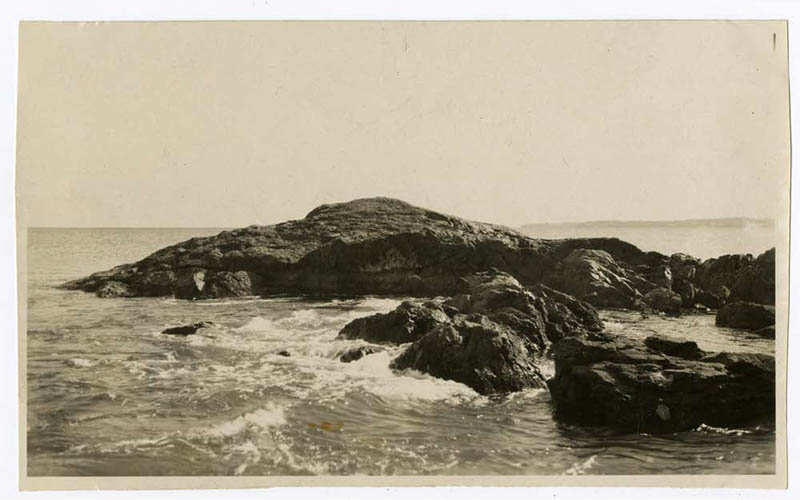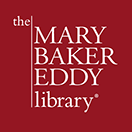How did Eddy approach times of isolation?

Red Rock, Lynn, Massachusetts. Date and photographer unknown. P07183.
For those experiencing isolation, dislocation, or restrictions, stemming from the Covid-19 pandemic or other factors, a poem by Mary Baker Eddy offers encouragement.
In our collections are two versions of verses she titled “Alone” (both unpublished). Biographer Robert Peel wrote that in the first version, dated August 13, 1867, she “spelled out her loss of husband and family.” He compared the “mournful refrain” of the first three stanzas with the light that broke through toward the poem’s end:1
song
Alone
By Mary M. Patterson
No answering tone, no gentle smile, Life’s joys to share or griefs beguile — Their sunshine o’er its shadows fling, Those hours have fled with life’s glad spring, And left this heart a sea-shell’s moan Repeating ever all alone! O weary heart, O tired sigh, Alone to live! Alone to die! — Love’s golden chain and fervent vow Are broken, and forever, now! O, can he bask in fortune’s ray — Who took from out my skies their day — Or love to learn, and willing own — He’s made a heart forever lone?
O weary heart, O tired sigh,
Alone to live! Alone to die! — When cruel man kept all my gain, Oft stored in tears through toil and pain, — I’ve sought the home my childhood gave — A moment’s shelter from the wave — Could [Then] those when sick, whose pain I bore, A sister! Drove me from the door? O weary heart! O tired sigh! Alone to live alone to die So wronged to live — Alone I’d die! — Yet not alone, for oft I see Bright forms that look in love on me, To thee, thou lost ones, and my own — I call, O, leave me not alone! When answering tones this music pour — Thy God is with thee evermore;
O better bliss, that knows no sigh,
O love divine! So full! So nigh! — And o’er the harp strings of the soul Sweet sounds this trembling mus echo roll, Thy love can live in Truth, and be A joy, and immortality; To bless mankind with word and deed, Thy life; a great and noble creed.
O glorious hope, my faith renew,
O mortal joys, adieu! Adieu! San. Aug. 13th 18672
That work was dated about 18 months after Eddy’s healing of serious injuries sustained when she was living in Swampscott, Massachusetts. While she felt a significant spiritual breakthrough had attended that healing, it had been followed by another hardship—the desertion of her husband, Daniel Patterson.
Just a few weeks before recording “Alone” in her notebook, Eddy had received an urgent message from her family in New Hampshire, reporting that her niece, Ellen Pilsbury, was dying of enteritis. Eddy went to her bedside and healed the young woman through her prayers. Nevertheless, that quick healing—and the joy it occasioned—was soon swamped by misunderstanding and rejection of Eddy’s ideas on the part of her sisters.3 Composed amid this fresh estrangement, the first version of “Alone” may speak to the crossroads at which she found herself, as she looked to the past for solace and to the future, feeling tasked with a mission to record the emerging understanding of what had healed her.
The next few years were hard. She had little money, no permanent home, and little contact with family. By her own account, “For three years after my discovery, I sought the solution of this problem of Mind-healing, searched the Scriptures and read little else, kept aloof from society, and devoted time and energies to discovering a positive rule.” But, she added, “The search was sweet, calm, and buoyant with hope, not selfish nor depressing.”4
By October 6, 1874, Eddy had written the second version of “Alone,” while located “In my chamber, (Solus) 7 Broad St.” She was on the threshold of new achievement—and challenge—boarding across the street from the house she would soon purchase. In 12 months her book Science and Health would be published, and the fledgling group of students she was teaching and nurturing would slowly grow.
It was during that time of promise, as well as uncertainty, that Eddy reworked her earlier version of the poem. You can read it here and gather your own sense of the ways she grappled with and overcame times of isolation5:
Alone
Love’s golden chain and fervent vow
Are broken, and forever now!
And can he bask in fortune’s ray,
Who took from out my skies [their day] each ray
And live to learn, and love to own,
He made a heart forever lone?
O weary lot! oh tired sigh,
Alone to live, alone to die.
Yet not alone methinks I see
A Mother look in love on me,
As in the golden hours flown,
When youth and joy were all my own,
And in [my] thy ear this music pour
Thy God is with thee evermore;
To soothe thy grief and check thy sigh
A love divine, so full, and nigh.
Then Yet not alone, I’ll bear the cross,
Through pain and wrong, and know no loss
Of faith and kindliest charity,
The law of Christ fulfilled in me
And make my prayer a loving deed,
My life a great and noble creed,
In patience peace I’ll live and die
With God to know just what am I
In patient peace I’ll live and die.6
- Robert Peel, Mary Baker Eddy: The Years of Discovery (New York: Holt, Rinehart and Winston, 1966), 218–219.
- F00041. Original in collections at Longyear Museum.
- Isabel Ferguson and Heather Vogel Frederick, A world more bright: the life of Mary Baker Eddy (Boston: The Christian Science Publishing Society, 2013), 69–71.
- Mary Baker Eddy, Science and Health with Key to the Scriptures (Boston: The Christian Science Board of Directors), 109.
- Eddy was a student of the Bible, and her reference to “the law of Christ” may point to Galatians 6:2, which counsels, “Bear ye one another’s burdens, and so fulfil the law of Christ.”
- Mary Baker Eddy, “Alone,” 6 October 1874, A10023.

